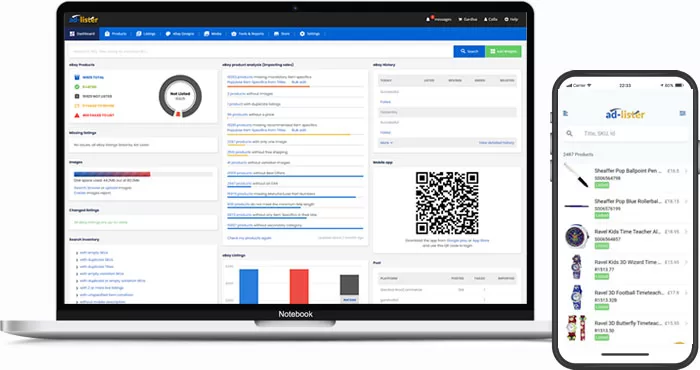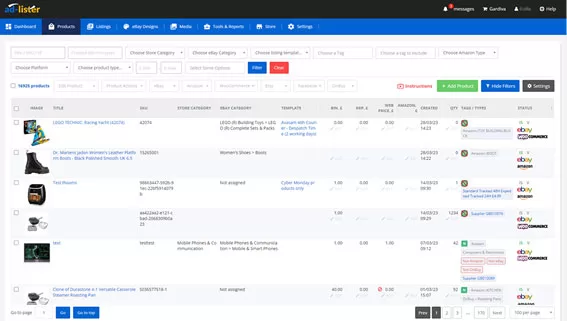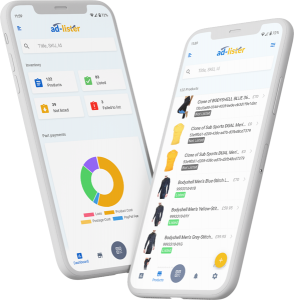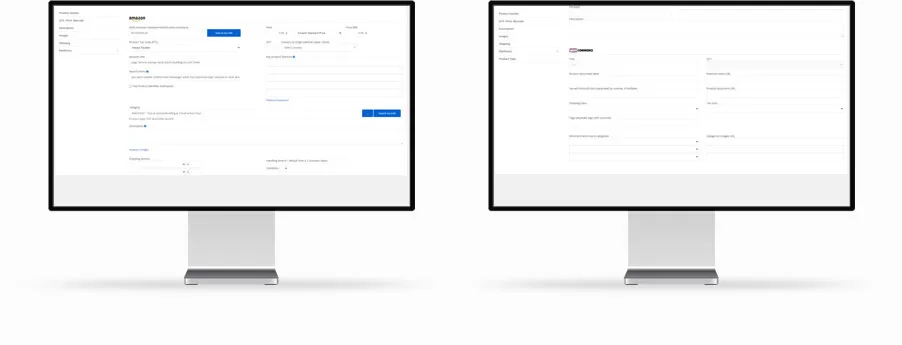Boost Sales with Ad-Lister’s Seamless Amazon Integration for Multi-Channel Success
Unlock more potential business with Ad-Lister
Any eBay seller with ambitions to expand their eCommerce operations across multiple channels will almost certainly have considered selling on Amazon. Amazon is the world’s most popular online marketplace. With more than 5.69 billion monthly visitors (2.71 billion more than eBay), and an unrivalled commitment to customer services, Amazon has had a ubiquitous influence over the entire eCommerce landscape. Owning a share of approximately 44% of the US online retail market (35% in the UK market), if you are not selling on Amazon, you are missing out on a potentially huge opportunity. However, while combining the sales-generating power of eBay and Amazon is often the first port of call on any multi-channel journey, many experienced high-volume sellers will attest that it is not an “easy” route to market. There are many challenges online sellers have to overcome to become successful multi-channel retailers.
Typical marketplace challenges include:
- Managing Inventory: Keeping track of inventory across multiple platforms can be difficult and time-consuming. It’s essential to have a centralised system for managing inventory levels to ensure that you don’t oversell or run out of stock.

- Pricing Strategies: The perceived value of a product can be very different on eBay and Amazon. Ultimately your pricing strategy is governed by the market. If you have access to in-demand items, your margins can be very favourable. However, If competition is high, your prices may need to come down. Sometimes, the best pricing strategy is to play a waiting game and wait for low-cost competitors to sell out before taking their position. It’s important to note that not all products are ideally suited to one particular channel. Some items will sell better on Amazon than on eBay, and vice versa. Savvy online retailers test their products and adjust their listing and pricing strategies accordingly.
- Marketplace Fees: Contrary to popular opinion, selling on online marketplaces is not cheap. And with the addition of sponsored listings, managing marketplace fees profitably has never been more challenging.
- Rules and Regulations: Every marketplace has its own set of rules and regulations. One of the most significant advantages of selling across multiple channels is that if you ever fall foul of one of these regulations and have your selling privileges limited, not all of your eggs are in one basket. Remember, if one channel is responsible for the bulk of your sales, your business may be at risk. Spread the risk.
- Limited Resources: Even the largest of retail businesses’ eCommerce departments are sparingly resourced. With only so many people juggling so many different tasks, it can take time to set up, test, and develop new channels.
But even before many online sellers get to grips with these everyday marketplace challenges, they fall at the first hurdle. Simply listing products to multiple marketplaces can be a significant headache.
Multi-Channel Listing Management Software
Listing multiple SKUs with multiple variations is difficult enough on one channel. Adding channels adds to the complexity. Unless you are a glutton for punishment and love juggling spreadsheets (an incredibly time-consuming and risky strategy), multi-channel listing management software is a necessity and not a luxury.
To complicate things further, retailers are spoiled for choice when it comes to multi-channel listing software. However, not all multi-channel listing management software is built the same. Here are ten things you need to consider when selecting the right solution for your business:
- Scalability: Will your software grow with your business in terms of the number of SKUs and marketplaces supported? Nothing will slow your business down more than changing systems during periods of potential growth. Once you have mastered eBay and Amazon, are there opportunities on other marketplaces like Etsy, ManoMano, B&Q, OnBuy, or more?
- Ease of Use: If your software isn’t intuitive, you’ll never reap its full benefits. When systems are overly complicated, teams start looking for alternative solutions and workarounds, creating opportunities for inefficiencies and errors to disrupt your business. Moreover, accessing your technology on the move or in the warehouse will save time and reduce errors. Does your multi-channel listing management tool offer an app to complement its traditional desktop service?

- Product Data: Setting up shop on a new marketplace shouldn’t mean starting from scratch. How easily does your technology provider make it to re-use, re-appropriate and optimise data from existing sources, including existing marketplaces, eCommerce platforms, and supplier feeds?

- Multiple Users: How many people in your organisation need access to your system? When multiple user accounts are included in the price, businesses can better utilise their flexible workforce, allowing them to scale during peak sales seasons.
- Customer Support: It’s incredible how many “customer-focused” technology companies don’t want to speak to you after you have signed a contract. Even when your software is intuitive and easy to use, the complexities of selling online mean you sometimes need extra support to continue your journey.

- Integrations: How easily will your multi-channel listing management software fit into your existing MarTech stack? Seamless integrations drive efficiencies, saving you time and money and improving your user experience.
- Transparent Pricing: Selling online is already expensive enough without your multi-channel software adding additional, unseen costs to the mix.
- Flexible Contracts: The very best technology companies want clients to stay with them because users benefit from using their software and not because they are tied into a long-term contract.
- Bespoke Development: There’s no such thing as a one-size-fits-all technology solution. Some businesses will require bespoke development to manage their eCommerce opportunity. Does your software company have the capability or desire to help you with this?
- Try Before You Buy: No consultative sales process will ever replace the opportunity to try a software product before you buy it. However, trial periods only work when supported with clear-and-concise support and documentation to help you get started.
Ad-Lister Ticks All The Boxes (Helping You Win the Buy Box)

Ad-Lister is the only multi-channel listing management solution that addresses all of your immediate and future eCommerce needs.
Ad-Lister’s Amazon integration includes all the key fields you need to list to the marketplace, including product and platinum keywords, product variations, and images. Furthermore, suppose you are already selling on Amazon. In that case, Ad-Lister can import your live listing to post to other marketplaces, including eBay, Etsy, OnBuy, or B&Q, allowing you to maximise your retail footprint across multiple high-profile sales channels.
Learn More
To learn more about how Ad-Lister can help you increase your sales with its seamless integration with Amazon, click here to book a demo or start your free 14-day free trial.






